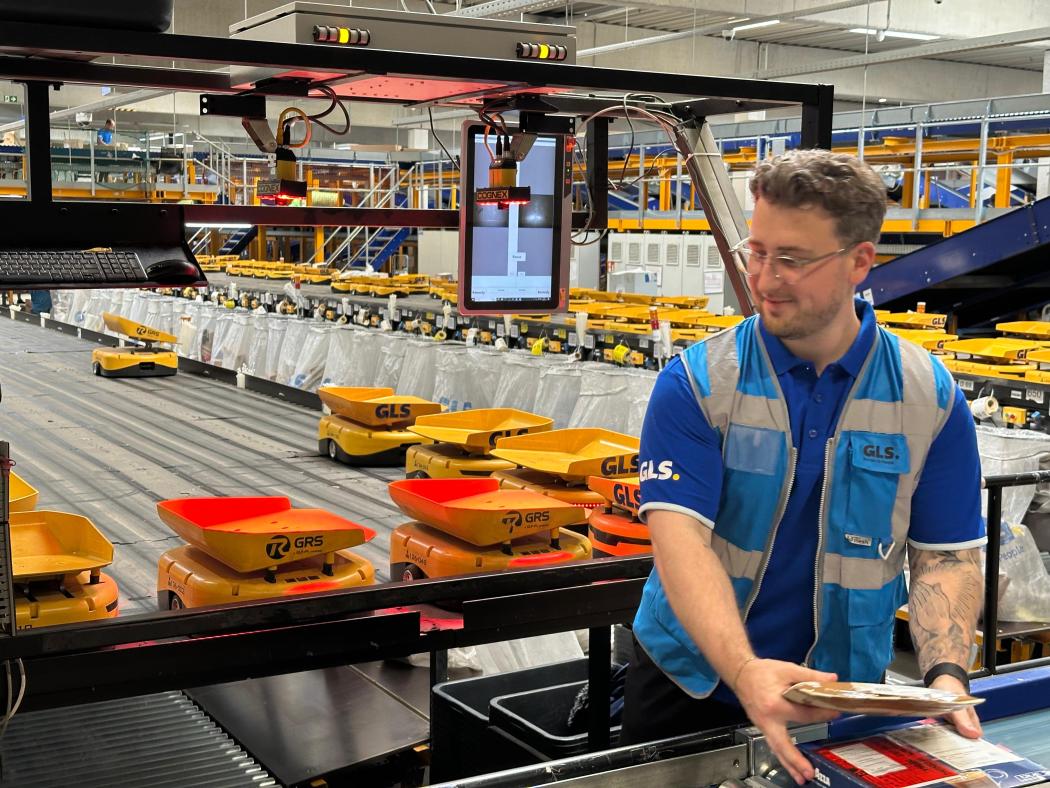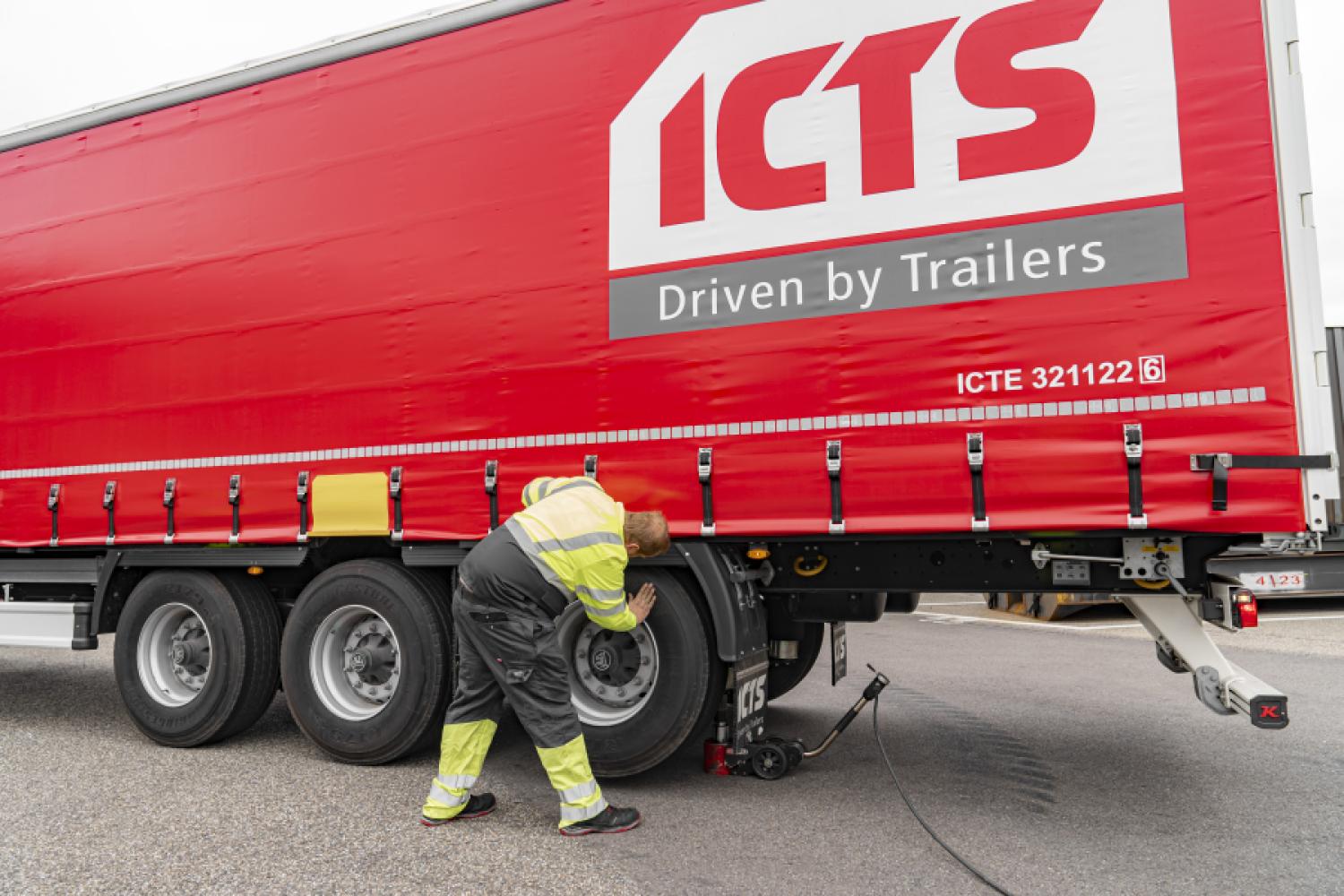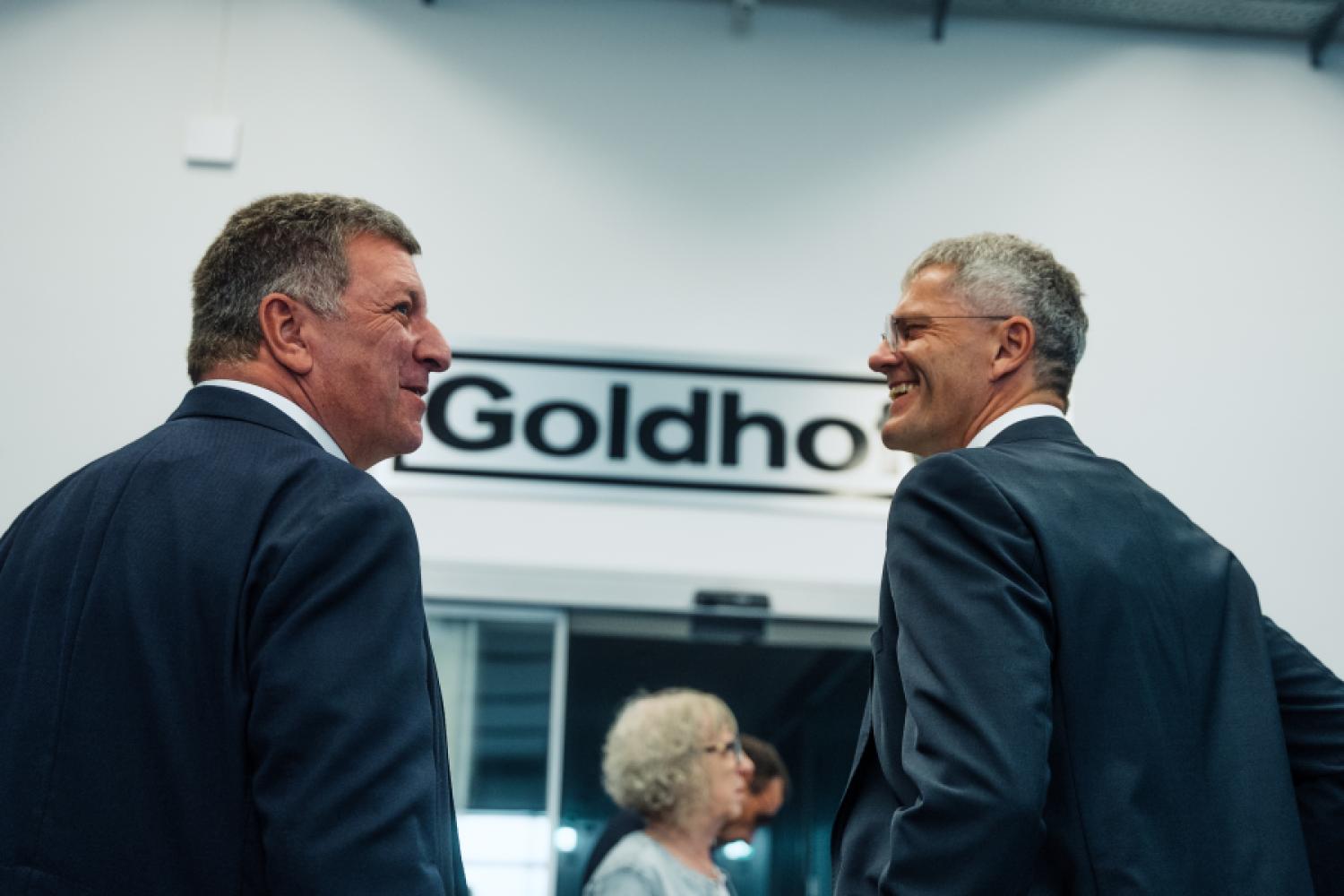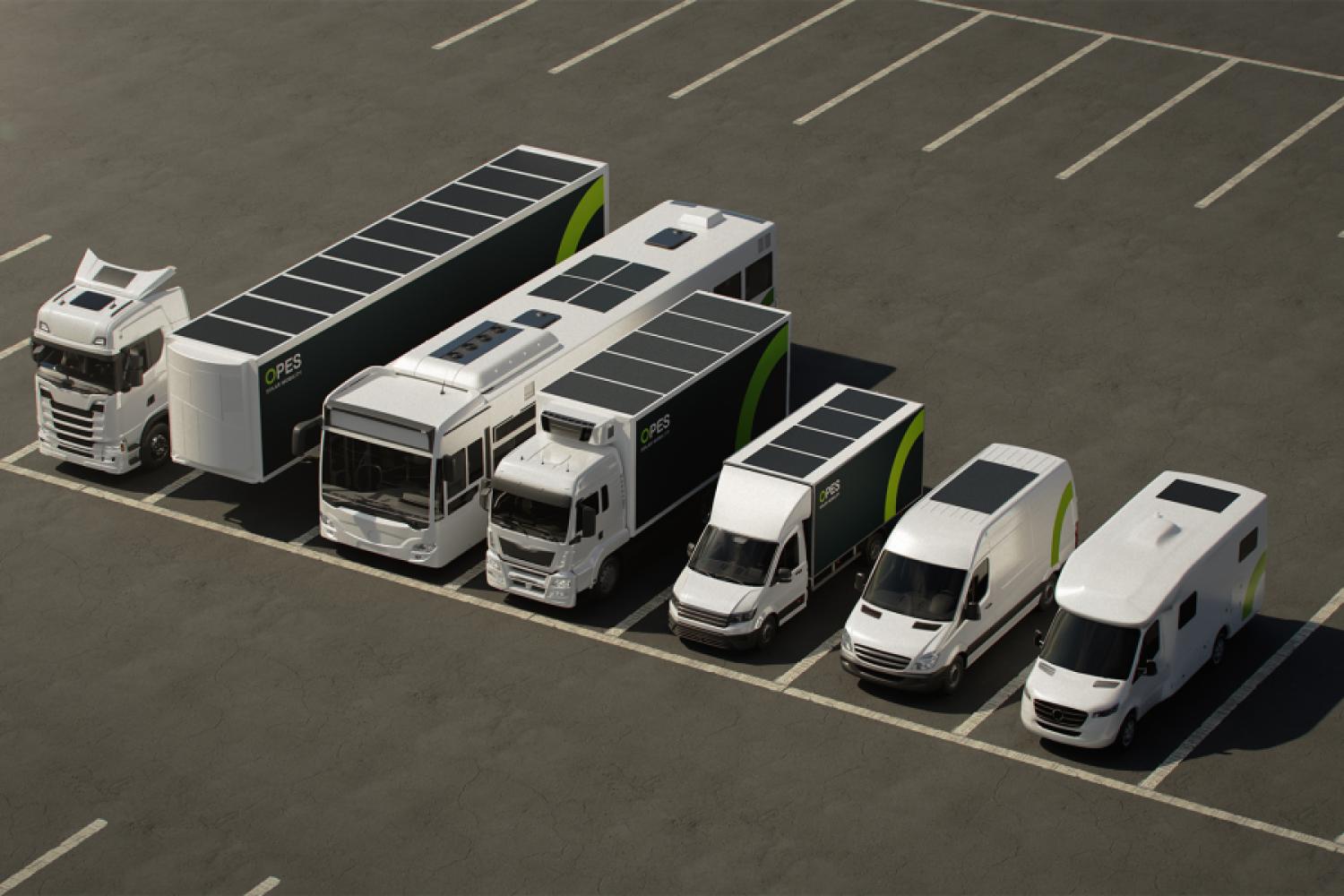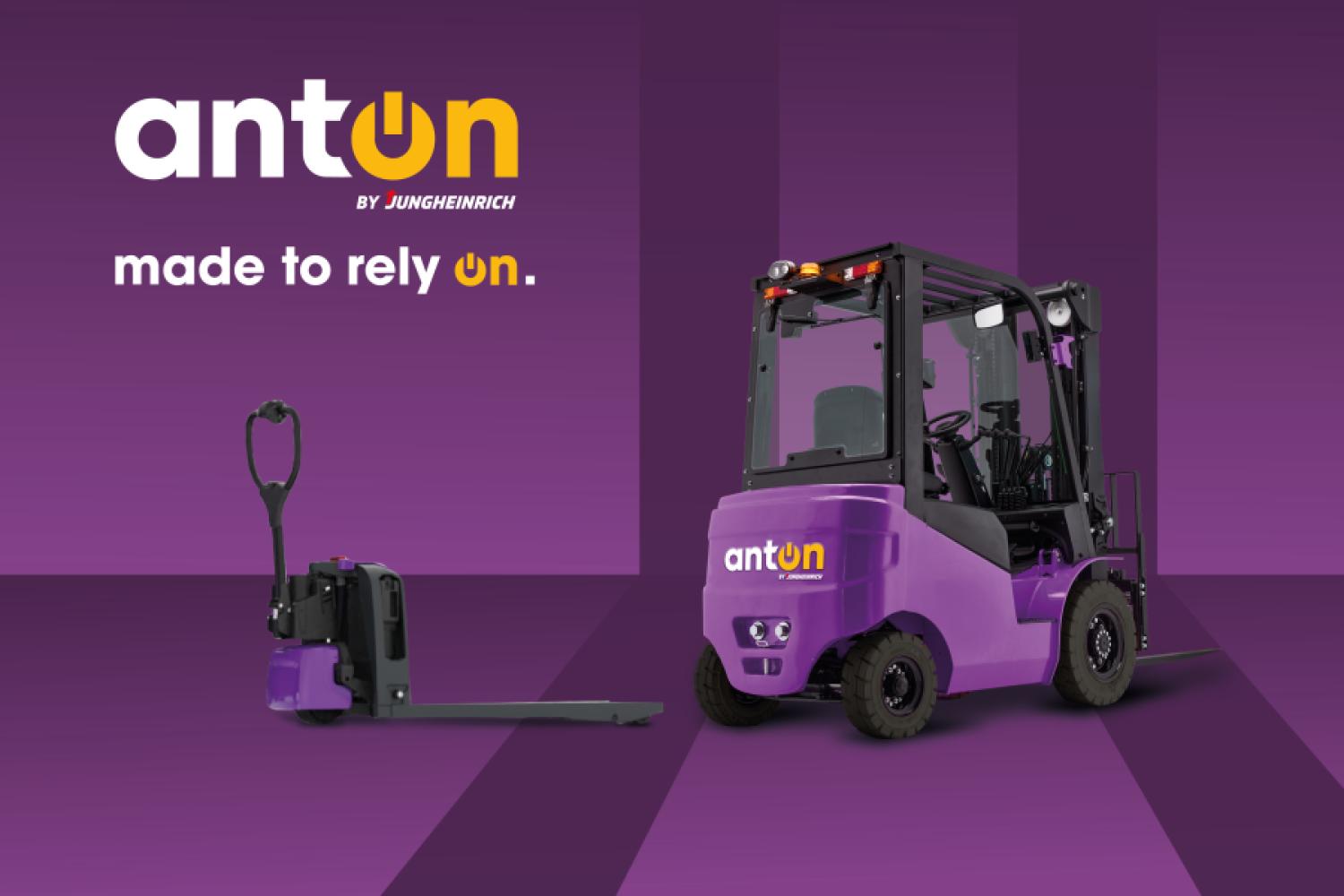GLS Germany is relying on a new generation of autonomous sorting robots at its Bielefeld location. Since autumn 2023, 70 so-called Automated Guided Vehicles (AGVs) from the manufacturer Libiao Robotics have been in use there. After a successful pilot operation, the system has now been transferred to regular operation. The goal is to make the sorting of small packages more efficient and precise while simultaneously reducing the workload for employees.
The robots handle the sorting of consignments weighing up to three kilograms and with maximum dimensions of 30 by 40 by 15 centimeters. In the sorting process, they independently move over a U-shaped sorting table, covering around 25 meters per consignment—from goods receipt to delivery preparation. Loading is done by personnel at an ergonomic working height to
reduce physical strain. Subsequently, the robots operate fully automatically and almost silently.
Robot swarm adapts to shipment volume
The control of the robot swarm is centrally managed via WLAN. This coordinates both travel paths and charging cycles. A charging cycle lasts only five minutes, enabling an operating time of up to five hours. The system is scalable: if shipment volumes increase, the number of robots in use can be flexibly adjusted without causing process disruptions.
A key advantage is the increased sorting capacity in limited space. While previously a maximum of 50 target stations could be served, with the robot system, it is up to 144. This significantly increases efficiency, shortens processing times, and improves process quality. At the same time, staff benefits from more ergonomic working
methods and reduced physical strain.
Robots are part of GLS's automation strategy
For GLS, the deployment in Bielefeld is a central component of its automation strategy. The company aims to make sorting processes more decentralized and cost-efficient in the future, particularly given increasing package volumes. Already this year, further locations such as Dortmund and Neuenstein are to be equipped with the robot system. In parallel, GLS is working on the next development stage: in the future, the robots should also be automatically loaded, which would further increase the automation level.
With the robot swarm, GLS is pursuing a technology-supported approach that combines flexibility, quality, and productivity. By combining modern technology with an experienced workforce, robust processes are to be created that reliably function even in times of
high workload.
Libiao presented new functions at LogiMAT 2025
Libiao Robotics had presented improvements to its "AirRob" system at LogiMAT 2025. The automated warehouse management system, which focuses on high productivity, dense storage, and low installation effort, was expanded with additional functions.
The new capabilities of the "AirRob" system from Libiao Robotics:
- Inventory check: Ability to use "AirRob" for inventory checks.
- Repacking: Goods can be removed from incoming packaging and repacked into containers for storage.
- Consolidation: Multiple items can be combined into one container to optimize storage capacity.
- Cycle counting: Provides containers for visual inventory checks.
- Relocation: Slow-moving items can be efficiently transferred onto pallets outside the storage grid.
- Returns processing: By adding a terminal and a handheld scanner, workstations can be specifically used for returns processing.
